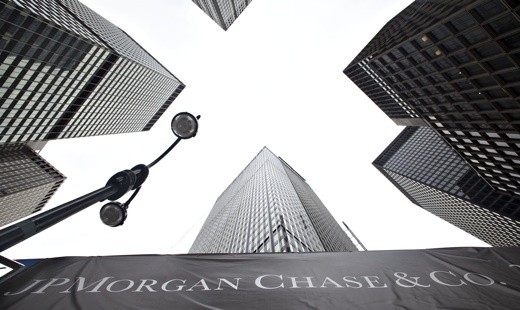JPMorgan Cracks the Mutual Fund Top 10
Post on: 20 Октябрь, 2015 No Comment

Photograph by Jin Lee/Bloomberg
JPMorgan Chase (JPM ) is finding that shrewd salesmanship can overcome mediocre investment returns in the mutual fund business. In 2011 it became the first bank to crack the list of the 10 largest U.S. stock and bond fund managers, according to research firm Strategic Insight. JPMorgan’s funds pulled in more new money, as a percentage of assets, than any rival with at least $50 billion under management.
The largest U.S. bank by assets isn’t attracting money because of a star fund manager or chart-topping investment returns: Its stock and bond funds, on average, beat just 47 percent of competitors in 2011. JPMorgan’s strategy is courting financial advisers to complement its in-house sales force and offering hedge fund-like products that have become more popular as investors flee traditional stock funds. “Their performance as an asset gatherer has been phenomenal,” says Geoff Bobroff, a mutual fund consultant in East Greenwich, R.I. “Their fund performance isn’t one to gather a lot of attention, but they’re solid from a business standpoint.”
Net deposits of $17.9 billion in 2011—third highest in the industry—brought JPMorgan’s fund assets to $139 billion, not counting money-market funds, and moved the bank up four spots to No. 9, ahead of OppenheimerFunds. As of Feb. 29, its assets had grown to almost $152 billion. Vanguard is No. 1 with $1.42 trillion.“We want to remain in the top five in net flows every year for the foreseeable future,” says JPMorgan’s George Gatch, chief executive officer of global funds.
Asset management, including money-market funds and separate accounts for institutional investors and wealthy individuals, generated 11 percent of JPMorgan’s $21.5 billion in fourth-quarter revenue and 8.1 percent of its profit. “It’s still a relatively small piece in terms of its total contribution to earnings, but it’s an avenue of growth,” says Shannon Stemm, an analyst at Edward Jones in St. Louis.

One of the bank’s strategies has been to design funds that bring institutional-style investing options to individual customers. In 2005 it opened JPMorgan U.S. Large Cap Core Plus (JLPSX ). which bets on stocks rising as well as declining, and JPMorgan Tax Aware Real Return (TXRAX ). which focuses on inflation protection and investing with an eye to minimizing shareholders’ tax bills. The $2.45 billion Highbridge Dynamic Commodities Strategy (HDSAX ) fund, launched in 2010, wagers on or against commodity-linked securities. “They’ve been imaginative in the funds they’ve opened and been very aggressive in marketing them,” says Burton Greenwald, a mutual fund consultant in Philadelphia.
At the same time, the bank has worked hard to woo registered investment advisers, or RIAs, who help clients choose investments or invest for them. It holds invitation-only seminars for RIAs featuring strategists, portfolio managers, and analysts. On Aug. 8, chief market strategist David Kelly held a conference call for advisers on Standard & Poor’s (MHP ) downgrade of U.S. debt that attracted 7,900 participants. “They realized that top RIAs want to be treated like institutional clients,” says Don Phillips, managing director of Morningstar (MORN ). “They want information and commentary. They don’t want sales pitches.”
One area where JPMorgan does not compete is index funds, which track the performance of benchmarks such as Standard and Poor’s 500-stock index—the hottest part of the business. Over the past five years, U.S. investors pumped two and a half times as much money into index funds, including exchange-traded products, as they did into those whose managers pick securities. The company has no interest in starting its own passive investing unit, says Gatch: “We think we’re going to do a better job for investors if we maintain our focus exclusively on active management.”
The bottom line: JPMorgan’s stock and bond funds drew $17.9 billion in net deposits last year, despite outperforming only 47 percent of their competitors.














